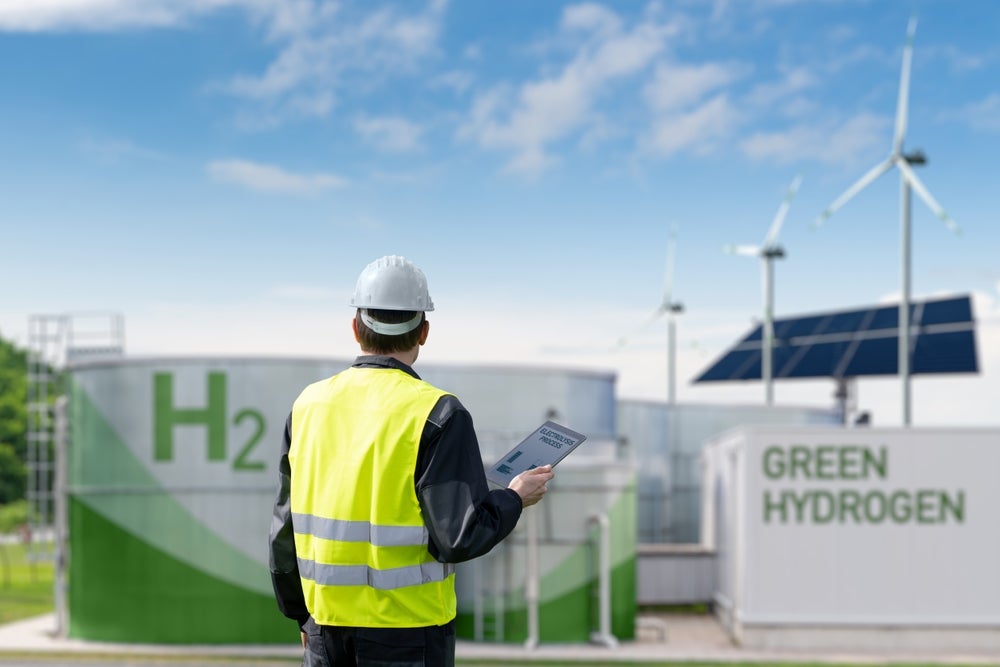Green Hydrogen Production
Green hydrogen, a renewable energy source, is produced by splitting water into oxygen and hydrogen through electrolysis, powered by renewable energy sources. This process results in zero carbon emissions.
Currently, green hydrogen is in its early stages of development. Globally, 79.46% of its capacity is in the feasibility phase, according to the GlobalData’s hydrogen database. The UK government aims to generate 10GW of low-carbon hydrogen production by 2030.
Several oil and gas companies are investing more in renewable energy sources to produce green hydrogen. As further research and development are conducted to improve the efficiency of renewable energy sources, production costs for green hydrogen are expected to decrease. The International Energy Agency (IEA) projects that the cost of hydrogen production will drop from a range of $3.2 to $7.7 per kg in 2019 to between $1.3 and $3.3 per kg by 2050.
Challenges of Green Hydrogen
For the green hydrogen economy in the UK to succeed, there needs to be a sustained demand, efficient production, and a suitable transport infrastructure for distribution. These requirements necessitate consistent funding and the ability to absorb operational losses in the short to medium term.
Since January 2024, three UK electrolysis-based projects have been cancelled, as reported by GlobalData. Factors such as a lack of energy suppliers, inadequate government support, insufficient plant details, and reduced predicted output capacities contributed to the cancellations.
In addition, two major UK plants have been stalled in the past year due to various challenges, including issues with the supply chain and infrastructure.
Issues with Green Hydrogen
Green hydrogen faces distinct challenges due to its low volumetric energy density. It needs to be stored at very low temperatures and high pressures to maintain sufficient energy density. Furthermore, hydrogen tends to diffuse into metallic structures, causing hydrogen embrittlement, which weakens the structures and increases the risk of leaks and explosions.
In response to these challenges, the UK has invested significantly in its hydrogen pipeline infrastructure, with the development of the “hydrogen backbone”. This pipeline, spanning up to 2000km, will connect hydrogen production and storage sites with energy consumers across the UK.
Future of Green Hydrogen in the UK
As it stands, the UK has 15 active, electrolysis-based green hydrogen plants. The three largest plants utilize wind, solar, biomass, and tidal renewable energy as their primary energy sources, producing a combined capacity of 0.371 Kilotons per annum.
According to GlobalData, the number of electrolysis-based green hydrogen plants in the UK is projected to increase by over 600% by 2030 with 95 new planned or announced plants. The completion of the “hydrogen backbone” and additional pipeline infrastructure will provide sufficient transportation capacity to meet government capacity goals.
The future of green hydrogen in the UK hinges on investment in transport infrastructure. Continued investment in the sector and optimization of electrolysers for green hydrogen and renewable energy production will lead to reduced production costs, making green hydrogen a more viable option in the UK’s energy landscape.
Original Story at www.energymonitor.ai
